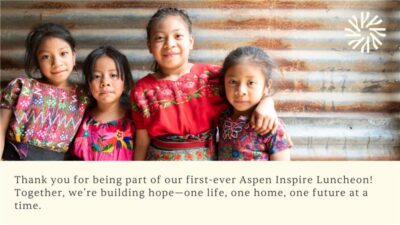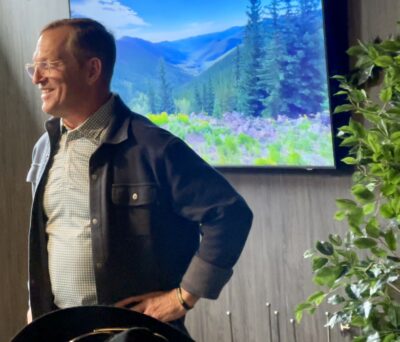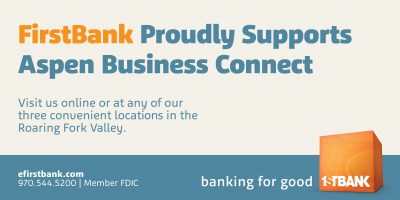Brand Strategy
Hi, my name is Chris Rubin, and I have a small agency called Chris Rubin Creative. If you’re wondering what we do, essentially, we have carved out a specialized niche in the startup space; we are laser-focused on driving growth for small and medium-sized businesses through thoughtful, processed, oriented due diligence with brand strategy and message.
Our Beginning
I’ve always been a word nerd and a book lover, and I’ve been writing and telling stories since I was a little kid. So that’s how I got started. I’ve always loved languages, and then my first real job out of college was as a copywriter, and my first two clients were Disney and Hard Rock cafe. Just totally lucky with that. That’s when I fell in love with the art of a well-built brand. So once I learned how to do it myself. After supporting some of the biggest household names, I realized, as I said earlier, what I like best was working with founders who theoretically bring the same passion to their work every day that I do. They’re sharp, they’re open-minded, and they’re ready to evolve. Together we become a compelling force in driving growth for their business, so I love it; I love what I do. I love working with people who love what they do.
Specializing in Brand Growth (1:19)
In a word, what do we specialize in? It’s all about growth. How we do, that is about a proven process that produces a Brand Identity. This Brand Identity is uniquely authentic to your business. It is compelling, emotionally resonant messaging that aligns your brand essence with the needs and interests of your specific target audience. This messaging makes people want to know more about you, gauge your brand, and tell their friends about it.
Exploring the Vision (1:47)
First, it starts with discovery. We come in with an open mind and an objective point of view, which often is maybe one of our secret weapons. Why? Because founders and leaders in small or medium businesses are inherently very close to everything that is to do with their brand and business. We come in with that objective point of view and a fresh perspective, and through the discovery process, we rally together your key stakeholders. This is whoever you deem to fit that title could be at any level of the hierarchy within your organization. We bring them together and essentially put on a session called a Rumble. It’s a vigorous discussion based on principles from a field called Design Thinking. It is well supported and originated with our company called Ideo. This field is taught at Harvard Business School. It’s a well-established system for problem-solving, especially with disparate opinions and points of view. It’s a way to sort of cut through all of that and get to the essence and root of the critical data points we need to build something meaningful. It’s all about problem-solving, but it doesn’t feel that way when you’re there. Essentially it is a vigorous discussion; we call it a rumble because it’s like a throwdown. We’re throwing ideas into the middle of the arena, and we’re testing them, and we’re trying them. We’re tossing them about, and the point of this is to come away with some consensus among that team of key stakeholders around some very important elements of the brand’s essence. But we don’t approach it that way. We’re not asking you, “what’s your mission, what’s your vision, what are your values?” That is a common way of coming at these things. That’s quite amateur, in my opinion, and my experience. It’s not the way you get the best results, mainly because the expertise is required to craft those pieces of language.
So we want to get raw data and extract that data from the mind of the people who understand the brand’s key stakeholders. Then we sort of plot those things on a board, and when you think about creativity, it’s really about connecting disparate ideas and creating something new. When we have all those data points up on our metaphorical board, we step back and look for the most compelling constellations between those data points. Then we come back with a series of documents that crystalize, distill and codify some of those key insights. We go through rounds of review, and eventually, we get to a point where we have your brand identity. That’s like your rallying crying. It’s like everybody locking hands and saying, “yes, this is who we are, why we exist, and what we aim to provide.” That’s a process, and I’m passionate about it, so I could probably go on and on.
Revisiting Existing Ideas (4:41)
Cut away the clutter to revisit ideas that may seem certain to those within the leadership team. But there is always great value in revisiting those over and over those things, testing and trying them out. Making sure that they apply to not only the current state of the brand and the business but that leaves room for this aspirational quality of the brand, in other words, paints a path towards growth. Where you want to grow and become in the future as a brand, no successful brand is static. And so we want to create space within the brand identity and positioning for that growth that we aim to create and drive through the conclusion process.
Craft + Process + Experience (5:26)
A simple equation, Craft is really about my dedication to the ongoing development of my skill sets as a writer and creative director. I’m a big believer in something called a Growth Mindset. I screen for that when I’m hiring new people for my team. We all share that as a core value. As an example of this, there’s an old cliche that is inherently true that states “writers write,” and so about eight years ago, I set a goal of writing at least 1000 words a day every single day, and that’s still going; it’s unbroken. This habit has also become a badge of honor among my team members, each on a similar journey. The point of this is so that we take the craft seriously. We’re never letting it sit idle; we’re constantly developing reading and writing daily.
Next is Process; it’s about bringing efficiency to an inherently inefficient domain, creativity. I spent many years in major brands as a writer, producer, and director, and in top global agencies. There I learned how to do this firsthand and what to avoid, like the pitfalls. And so, in CRC, I cobble these best practices into our efficient, effective process, and it’s been proven over time to deliver growth to our clients.
And finally, of course, there’s Experience, not just witnessing and collaborating on multimillion-dollar projects and engagements but leading those as well. The previous combined with my experience at Accenture, where I led a custom-built small creative team to win pitches. We set ourselves apart by creating a unique brand identity and positioning for every pitch. Each was like a startup, so our win rate was nearly 90% over time. We brought in over a billion dollars in new business for the firm in a year. So this combination of Craft + Process + Experience is why we do so well helping startups grow. That is the sum of the Equation.
B2B & B2C (7:41)
Ultimately even in B2B, all those people within the Bs or Cs themselves, right? B to E is something where you often know with a SAS platform. For example, you might be selling that platform B2B, but you need messaging and a brand that speaks to the end consumer, the end user of that platform. So when you do it right, you’re helping your B2B customer become more successful with your product and their customers.
I feel like I can be a powerful weapon for a small to medium-sized business in this valley that might not have access to this service. Maybe it’s not about access, and these businesses didn’t know it existed. I’ve worked with multinational firms, and I’ve worked with household names. That’s how you learn to do what I do, but what I love the most is working with founders; there are multiple reasons for that. An ideal client is a small to medium-sized business with a great product market fit and momentum. So you know we’re not going to be able to do much with a business that has just started. We need the founders to be able to find their feet and get some momentum. Product market fit is essential. I’ve often led engineering-founded startups; they’re so analytical and logical, and they do not sort of there. They may have hired someone to look at the brand early on, and they launch, and now their product is a big success. They just want to keep moving, and so, for example, they might want to hire someone to write a new copy for their website, and that’s essentially like launching a plane off a cliff without an engine. You know you might get a little way. Still, that plane’s going down, so you need to focus on that brand foundation, your bedrock, and then you can build a messaging on top of that bedrock. That’s going to allow you to grow exponentially.
My background is mostly from working directly for other massive global agencies or in-house at those huge brands. Once I started CRC, the focus and idea were to work with small to medium-sized businesses. The way to think about it is I took all of that major global household name brand experience and have parlayed that into this agency, where we are focused on the little guys, so to speak. We want to help small and medium-sized businesses compete at the same level as all of their household name competition. So while CRC has worked with global brands, we know those are startups. It’s a broad category, and there are all different sizes of players within the startup space. If you’re a founder or work directly with a founder, we’d like to talk to you and see if there’s a way we can help you grow your business. I believe that we probably can.
Foundation & Growth (10:47)
What we provide can be broken down into two main aspects, foundation and growth. In technical terms, brand identity and brand positioning. Identity is essentially knowing yourself, who you are, why you exist what you aim to provide. This is your rallying cry, as I mentioned a little bit earlier. Positioning is about knowing your audience, so we deep dive into that primary and secondary research. We create a composite sketch so you know it. You know they have a name, a face, and we know exactly who you’re talking to. What they need, what they believe, what they desire and then, of course, you’re not doing business in a vacuum, right?
So we need to look at your competition. Who else is competing for that same audience? Who’s trying to communicate with that same target group of people? For that, we do a competitive market analysis. The analysis breaks that down in really clear detail through a messaging and branding lens. So it’s not necessarily about you knowing the numbers behind their business. It’s about you know how they’re doing, what they’re doing in a brand and marketing context. That’s the foundation, your bedrock, and that’s how you ensure your business can grow long. You know, with longevity, with the work, you know, this due diligence that we put into place has a long lifespan. So growth is the other aspect, and this is messaging and strategy that’s built atop that bedrock, that sturdy foundation, and so what is this about it’s really where we find that overlap between your brand’s key value proposition and the needs and desires of your target audience it’s like a Venn diagram your value pop on one side there needs an interest on the other side there’s a crossover in the middle the way they overlap that’s the lens through which we communicate that’s the kind of messaging that drives affinity, loyalty, conversions and sales growth.
Branding Timeline (12:43)
On average, you want to plan for two to three months total, which will allow the time for this due diligence that I’ve described, which is so important. So that’ll take us through the discovery process, brand identity and positioning. Then into the messaging, the growth part and essentially, you want to think of the end of that three-month cycle as you come away with the documents I’ve mentioned. You also want to get into your main narrative, which you can picture as a long-scrolling homepage on your website. If your website is your central outpost where everyone starts to learn about you as it should be, this is one spot, one location; in one shot, we tell your story everything they need to know so that they’re ready to engage further and learn more.
I was fortunate enough to work on a team that developed something for Google’s Creative Lab called project rebrief. We recreated four classic ads for the digital age. It feels good, but I’ll add that the best recognition is when my clients come back and tell me what the work has done for the growth of their business. That’s really what I’m in it for, well, I think you know big agencies are not only expensive, but they’re relatively impersonal no matter how hard they try. So part of the reason for starting my agency was to sort of solve that problem. I love working with founders, and you know I’m the one my clients work with daily. Of course, I have a team behind me, but I’m doing a lot of the heavy lifting with the research and initial drafts. We have strategists and planners, but ultimately, I like dealing with my clients directly. So it’s that sort of personal level of attention and service that I think is another thing that sets us apart, and it just feels so well suited to this valley. Here, it feels like everyone is very focused on doing business that way, which appeals to me at this stage in my career.
Movere (15:03)
Well, movere is the Latin verb to move; it’s also the root of English words like emotion and motivation. So it just felt so suitable for us because what it means is it’s sort of, in a way, referring to that secret sauce that we bring to the table. A blending of all the things we’ve talked about today, resulting in unique, authentic, strategically targeted brand messaging that moves people to think, to engage to become a raving fan. That’s what we’re in it for; Movere.
Call CRC Today (15:40)
But I’m here now and ready to help. Visit chrisrubincreativ.com. Well, I recommend just going to our website because we put a lot of time and effort into telling a lot of the story that I’ve told today in a very detailed fashion. Then, of course, we’ve got many case studies on the Movere page, which stands for results. You can see story after story about how we’ve done this for big-name clients and startups. There’s a whole section about our process, my background and my experience, and I think it’s a really good way to get to know us a little more. There are easy ways to reach out and book a meeting on the website. I’ll mention that on the website; if you’re not sure what kind of service you might need, we created a quick questionnaire that takes about 30 seconds to fill out. We can come back when we have that information and set up a call. Then we can help you understand exactly what would be right for you and your needs.
Jillian: So is the call a free call to initially see if it’s a right fit?
Chris: Absolutely, yes, the initial, the discovery conversation. Now that I’m here in the Roaring Fork Valley, I’m eager to meet local brand owners and learn more about the businesses trying to succeed here. So yeah, there will be value exchanged on both sides of that conversation, which I would welcome.
Chris: So, with that said, if you have a brand or a business and are interested in growth, we should talk. I’ve got lots of ideas and experience to build from, and if I learn a little bit more about who you are and what you’re trying to accomplish, there might be a way for us to work together. Together we can achieve the goals that you have in mind, so let’s realize your vision together.


